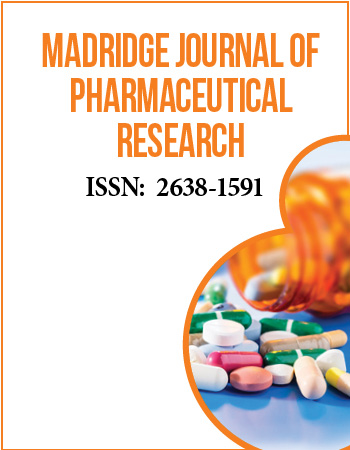International Conference on Medicinal and Pharmaceutical Chemistry
December 5-7, 2016 | Dubai, UAE
Role of formyl peptide receptors in the regulation of thrombosis and haemostasis
Institute for Cardiovascular and Metabolic Research, School of Pharmacy, University of Reading, UK
Platelets are small circulating blood cells that play a pivotal role in the regulation of haemostasis by preventing excessive bleeding through blood clotting. In appropriate activation of platelets under pathological conditions leads to the formation of blood clots (thrombosis) within the blood vessels resulting in life-threatening conditions such as heart attacks and strokes. Moreover, due to their high number in the circulation, platelets play a significant role in the progression of inflammatory responses. Although currently used anti platelet drugs help save lives, they are associated with severe side effects such as bleeding and they are ineffective in some patients. This emphasizes the need for the development of safer and more effective therapeutic strategies for the prevention and treatment of cardiovascular diseases. Platelets possess formyl peptide receptors (FPRs), which were originally found on leukocytes where they play indispensable roles in the regulation of host defense and inflammatory responses. The expression of these receptors has been previously reported in platelets and their stimulation induces chemotaxis and calcium release in platelets. Together, these results suggest that the FPRs play a role in the regulation of platelet activation. However, the detailed characterization of these receptors in the regulation of platelet function has not been established yet. Therefore, in this study, we aim to determine the role of FPRs in the regulation of thrombosis and haemostasis using a range of in vitro and in vivo platelet functional assays. Furthermore, the regulatory mechanisms that control the functions of FPRs in platelets will also be established.
Our preliminary data support our hypothesis that FPRs play significant role in the modulatioof platelet function. We confirmed the expression of FPR1 in human platelets by transcriptomics and immunoblot analyses. In addition, the flow cytometry analysis indicates that the level of FPR1 is increased upon activation of platelets with an agonist. This suggests the presence of FPR1 in platelet granules. FPR1 agonists such as fMLF induced platelet activation in a dose-dependent manner and this was inhibited when FPR1 antagonists were used. In addition, a selective FPR1 antagonist, cyclosporin H inhibited platelet activation induced by agonists such as CRP-XL and this suggests that FPR1 mediated inverse signaling may impact on the regulation of platelet functions. Together these data demonstrate potential roles for FPRs in the regulation of platelet activation and therefore in thrombosis, and haemostasis.
Biography:
Maryam Salamah is a postgraduate researcher at the University of Reading working under the supervision of Dr Sakthivel Vaiyapuri. Her research currently focuses on the effects of formyl peptide receptors in the regulation of platelet function. She received her masterʼs degree in Biomedical Sciences from the University of Brighton, in which she had the chance to work at the Royal Sussex County Hospital to establish a technique for hematological diagnostic tests. She also obtained a certificate in Medical Laboratory Technology from King Abdulaziz University, where she had the chance to work as a laboratory technologist at various laboratories in King Abdulaziz University Hospital and King Faisal Hospital & Research Centre (KFH&RC).


